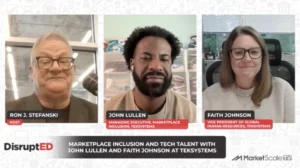3 Pillars of Online School Communities
By Ali Arsan
Back when I built my first school website, the standout feature was an alumni directory. Technology has improved enough since the ‘90s that no one is going to get excited about a tool that simply helps students find classmates anywhere in the world to share a cup of coffee with.
But that shift in expectations isn’t just about how improved technology makes once-cutting-edge tools passé. It’s also a result of our changing attitudes about the online environment and its relation to “real life.” Not too long ago, online communities were niche spaces, usually targeted to particular interests. Today, more and more of us are meeting friends, working remotely, organizing politically, and even going to school entirely online. The internet is no longer separate from real life but an extension of it, a tool we use to organize and even create communities that play central roles in our lives.
If we embrace that change, our school websites can be powerful tools for organizing and nurturing our educational communities as well. To do that, we need to build sites that are easy to use, inconspicuously secure, and authentically reflective of the community in and around the school buildings.
Tech that Speaks to any Level of Fluency
Schools are wonderfully diverse these days, with families from a range of socioeconomic, religious, and international backgrounds. All of this might affect their technological fluency, so what works for one student’s family may not for another. Many student guardians will expect an experience that matches the consumer apps and websites they interact with already, while others may have little experience with technology and become frustrated if they aren’t sure how to find what they want quickly.
If a parent looks for the school calendar, it should first be easy to find. That same calendar should automatically be visible and optimized for their input no matter the device. And, of course, users should be able to subscribe to the calendar so that they never have to search for it again.
The bottom line is, if your communication platform is difficult to navigate, glitchy, or overly complicated, parents and other stakeholders will turn away.
Adopting common user interfaces goes a long way toward reducing friction no matter the user. That art teacher who isn’t the tech-savviest educator on staff, but who forms touching bonds with her students as she teaches them to silkscreen a T-shirt, isn’t going to post a video of the process if she first has to watch a 10-minute tutorial on uploading. If the interface is simple and familiar from other services, however, she’s going to have a good idea how to share it, and parents will get the chance to see inside her classroom like they’d never been able to before.
Security Should Be the Strong Silent Type
Schools and districts are increasingly integrating other technology with their websites, such as payment functionality or a learning management system. Consolidating this shared data is a great help in creating one online destination for parents, but all that data going back and forth can pose a security risk.
Storing data in multiple clouds and further protecting it with encryption and public key infrastructure while making everything visible to appropriate stakeholders through single sign-on is vital. It takes a lot of effort and should be a top concern for school leadership, but it’s not very visible to end users. If you’re doing it right, parents won’t have to worry about website security and can focus on finding the information they need to support their student’s education.
A Window into School Culture
Our online communities are not siloed off from the physical communities they serve. The interfaces may be different online than in person, but the interactions between parents and schools should not be qualitatively different than they are in the physical world.
It should be as seamless for a student’s family member to have a conversation with faculty as it would be in person. The communications tools, from websites to social media to direct notifications, should reflect the school’s culture and promote community engagement.
For example, a static image of the refurbished gymnasium is fine to share on a website. However, a page brimming with video, photos and social media posts about the first basketball game or the school carnival hosted there transforms both the gym and the website. No longer is it just another athletic facility or online space but a place people want to be involved in and want to involve their children in—a place where community is created and nurtured.
Ali Arsan is the founder and chief executive officer of Edlio. With 18 years of experience working in edtech, Arsan still loves learning from educators and discovering what makes each school special.









